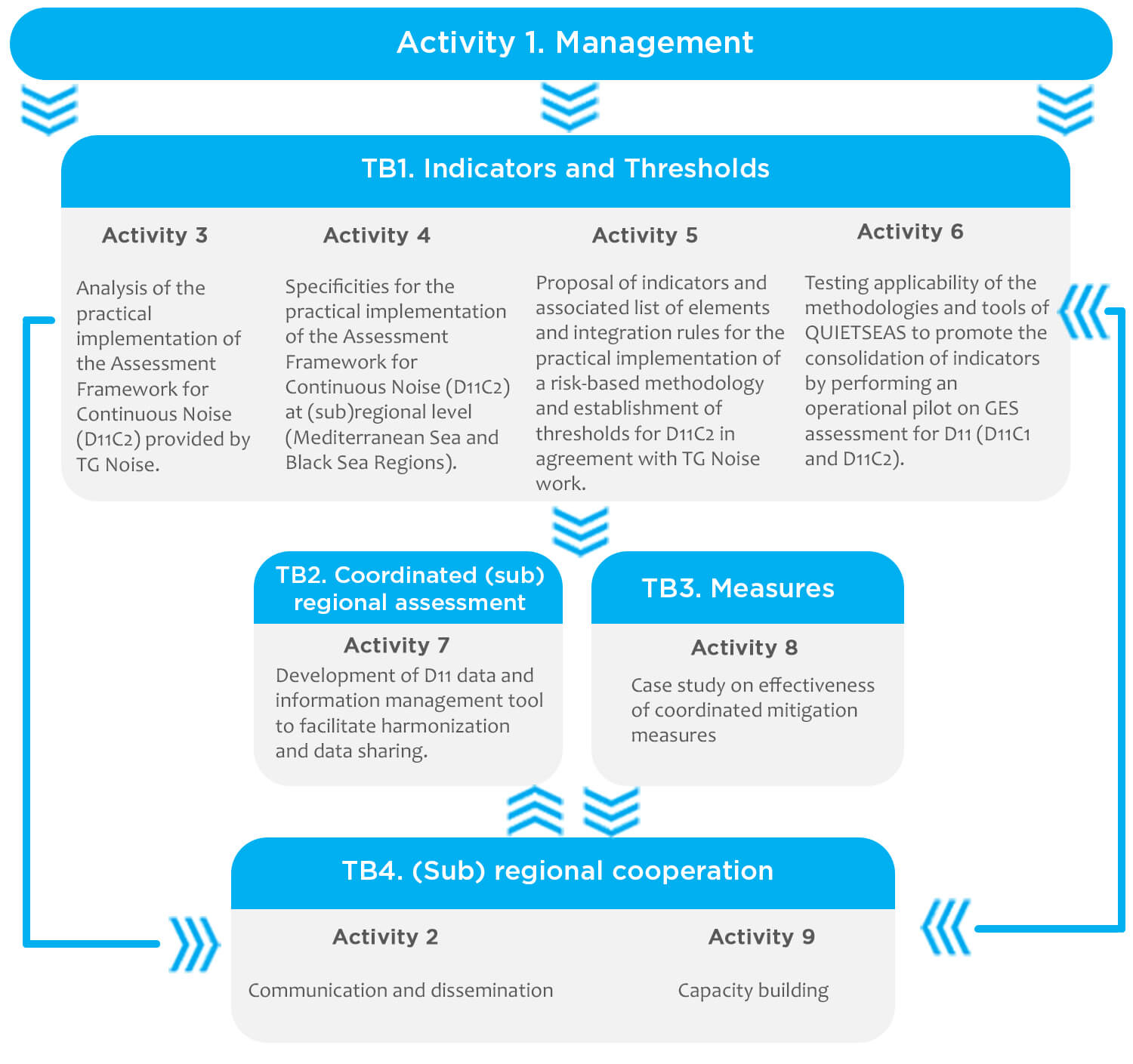Thematic Blocks

Indicators and thresholds
Indicators will be defined to propose a methodology for assessing the risk of impact due to underwater noise and establish threshold values. Once the methodologies are defined, its applicability will be tested in the Mediterranean and Black Sea Regions through the first exercise of GES assessment for impulsive and continuos noise in both regions.

Coordinated (sub)regional assessments
Management tools will be developed to a) facilitate Competent Authorities the noise management, b) support the management, harmonisation, data sharing and reporting of continuous noise data, c) support the implementation of the monitoring programmes d) enable the preliminary assessment of the risk of impact on biodiversity by continuous noise sources, in particular marine traffic.

Measures
A practical exercise will be performed based on two cases studies to assess and quantify the effectiveness of corresponding potential joint measures that address the transboundary pressure caused by continuous underwater noise.One of them will be a multi-scenario of vessel speed slowdown. The other one will be the opportunistic activity-dependent scenario of traffic reduction created by the COVID-19 lockdown

Subregional cooperation
The QUIETSEAS project will continue reinforcing links among Sea Regions by performing specific capacity building events, training sessions and networking activities. It will pay spetial attention to the cooperation in the Mediterranean Sea and Black Sea Regions, fostering cooperation between EU and non EU Member States.
OUTPUTS
Boosting Cooperation
Deliverables will be available in this section during the progress of the project
Download and share them!
Activity 2. Dissemination and Communication
D2.1. Communication and dissemination plan
D2.2. Final report on Communication and dissemination activities
Activity 3. Analysis of the practical implementation of the Assessment Framework for Continuous Noise (D11C2) provided by TG Noise
D3.1. Review of risk-based approaches and frameworks for D11C2
Activity 4. Specificities for the practical implementation of the Assessment Framework for Continuous Noise (D11 C2) at Mediterranean and Black Sea level
Activity 5. Proposal of indicators and associated list of elements and integration rules for the practical implementation of a risk-based methodology and establishment of thresholds for D11C2 in agreement with TG Noise work
Activity 6. Testing applicability of the methodologies and tools of QUIETSEAS to promote the consolidation of indicators by performing an operational pilot on GES assessment for D11 (D11C1 and D11C2)
Activity 7. Development of D11 data and information management tools to facilitate harmonization and data sharing
D7.1. Data management tools for harmonisation and noise data sharing
Activity 8. Case study on effectiveness of coordinated mitigation measures
Activity 9. Capacity building

Definition of regional specificities of a risk-based approach for continuous sound assessment in the Mediterranean Sea and Black Sea regions


Proposal of a methodology to establish threshold values for continuous sound in the Mediterranean Sea and Black Sea regions

Preliminary GES assessment of D11 underwater noise in the Mediterranean Sea and Black Sea Region

Common operational tools to assist maritime decision making for a sustainable management of sensitive marine areas

Best practices of subregional cooperation to set mitigation measures to address underwater continuous noise pollution.

